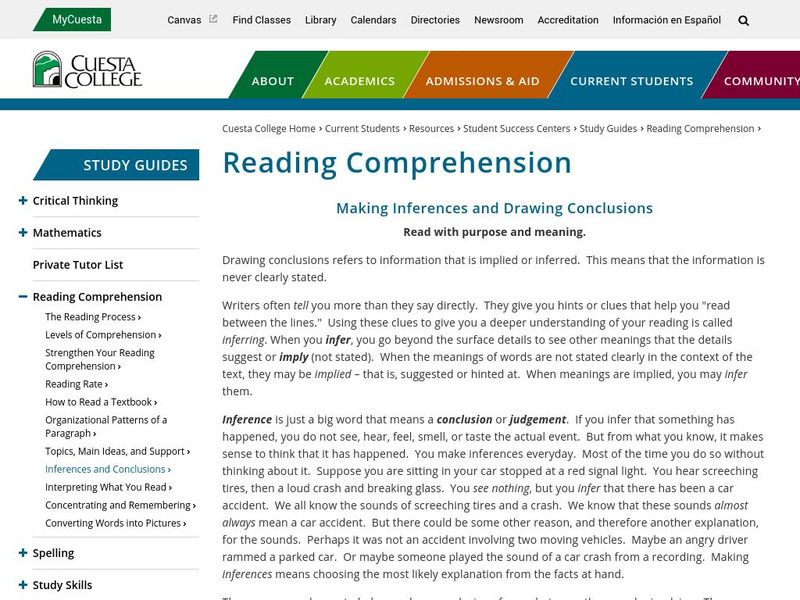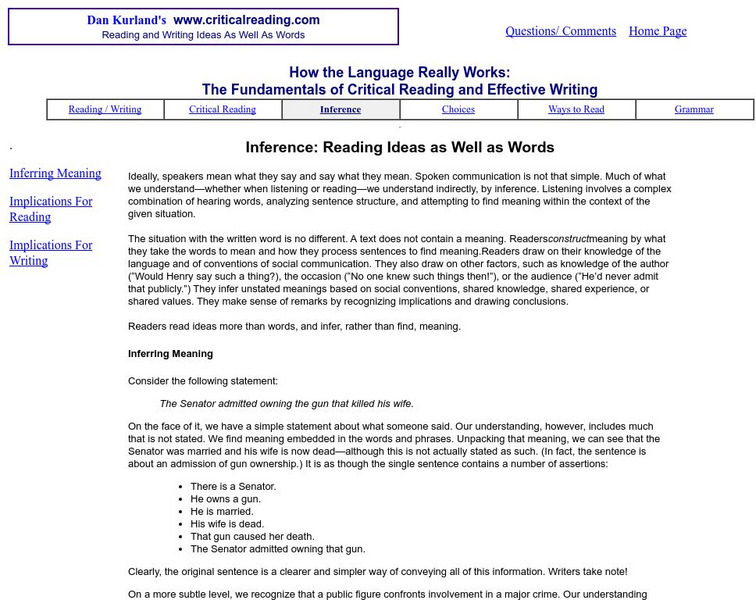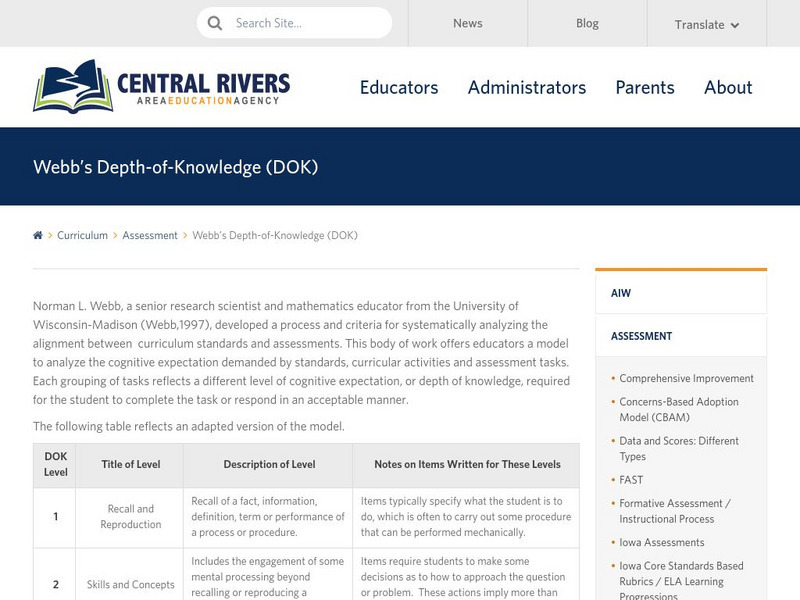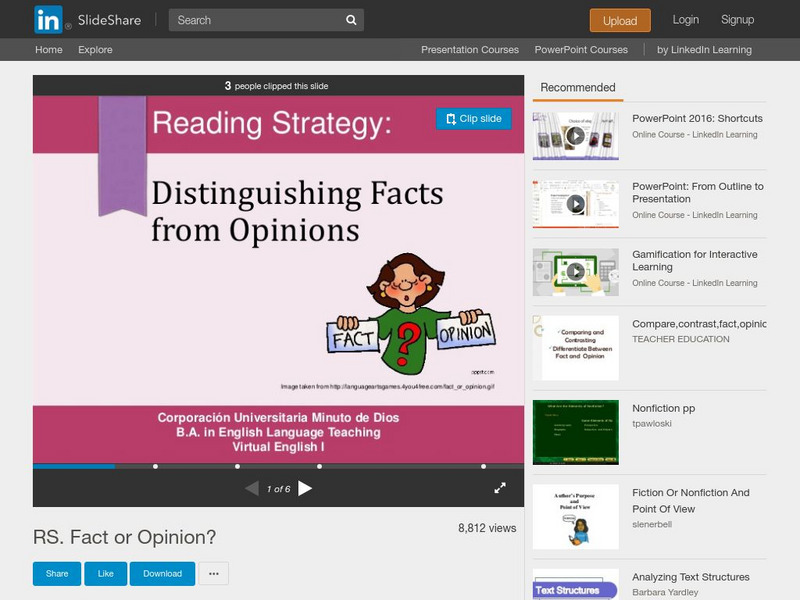CK-12 Foundation
Ck 12: 4.1: Persuasive Essay
[Free Registration/Login may be required to access all resource tools.] Learn to write a persuasive essay by organizing arguments in a logical order, providing appropriate supporting details, clarifying main arguments, and identifying...
CommonLit
Common Lit: Text Sets: Argument, Bias, and Persuasion
Collection of 43 Grade-Leveled texts (6-12)on the topic Argument, Bias, and Persuasion. Have students track arguments through texts as they examine logical reasoning, bias, and persuasive techniques such as emotional appeals, character...
Khan Academy
Khan Academy: Introduction to Arguments
The Logical Reasoning section of the LSAT assesses your ability to analyze arguments. This article introduces you to the components of an argument and how to recognize them. If this is new to you, it's a good idea to spend quite a bit of...
Khan Academy
Khan Academy: Types of Conclusions
You might find it helpful to categorize the kind of conclusion you're dealing with as you approach passages that contain arguments on the LSAT. Your success in analyzing arguments-passages with a conclusion and supporting evidence-starts...
Khan Academy
Khan Academy: If X, Then Y Sufficiency and Necessity
In this lesson, you will learn how to recognize arguments that contain conditional statements, and learn the difference between sufficient and necessary conditions.
Khan Academy
Khan Academy: Necessary Assumptions Quick Guide
A quick guide to approaching questions that ask you to find an assumption required by the argument. This question asks you to identify the claim that must be true or is required in order for the argument to work. In other words, there is...
Khan Academy
Khan Academy: Identify the Role Learn More
Some questions ask you to describe the individual role that a statement is playing in a larger argument. These questions require you to understand the statement in question, but even more important is your understanding of its context...
Khan Academy
Khan Academy: Organizing Information Quick Guide
Organizing information questions ask you to understand and analyze how a passage works to make an argument. What is the progression of ideas in the passage? or What is the purpose of a specific paragraph?
Khan Academy
Khan Academy: Strengthen and Weaken Learn More
How do we identify information that would strengthen or weaken an argument? Strengthen and Weaken questions ask you to find info that would make the conclusion of an argument more or less likely to be true, based on the evidence that's...
Khan Academy
Khan Academy: Identify the Conclusion Quick Guide
The resource from Khan Academy provides practice questions for the LSAT. This section provides quick guide on "how to identify a conclusion in a line of reasoning" in the "Logical Reasoning" section.
Khan Academy
Khan Academy: Identify the Conclusion Learn More
The resource from Khan Academy provides practice questions for the LSAT. This section provides quick guide on "how to identify the main conclusion of an argument" in the "Logical Reasoning" section.
Khan Academy
Khan Academy: Identify the Conclusion Examples
The resource from Khan Academy provides practice questions for the LSAT. This section provides examples of the "Main Conclusion" question type of the "Logical Reasoning" section.
Khan Academy
Khan Academy: Perception, Prejudice, and Bias Questions
Questions pertaining to perception, prejudice, and bias.
Louisiana Department of Education
Louisiana Doe: Curriculum Hub: Ela Guidebooks: Teenage Brain: Compare and Contrast Claims Across Texts
Compare and contrast claims across texts from the argument understanding tool.
McGraw Hill
Read: Does Technology Make Us Lazy?
Compare these two passages for some interesting ideas about how technology affects our lives. The questions that follow ask you to identify the main idea from either direct statement or inference.
Harvey Mudd College
Claremont Colleges: Writing an Argument
Brief handout describing different forms of argument for writing.
Other
Ed u.com: Three Fundamentals of Selling Your Message
This site is provided for by Ed-U.com. Based on the Greek ideas of ethos, logos, and pathos the writer addresses how to adequately persuade an audience.
Other
Cuesta College: Reading Comprehension Guide: Inferences and Conclusions
Explanations and examples of inferences and conclusions in reading and in understanding context clues to define unknown vocabulary.
Other
Daniel J. Kurland: Critical Reading: Inference: Reading Ideas as Well as Words
This college instructor offers his insights into critical reading and how to develop skills to interpret as well as comprehend the written word. RL.9-10.1, RL.11-12.1, RI.9-10.1 textual evidence and inference.
TES Global
Blendspace: Ethos, Logos, Pathos
A learning module with eight links to images, videos, charts, and assessments about ethos, logos, and pathos.
Other
Central Rivers Aea: Webb's Depth of Knowledge (Dok)
This page offers a wealth of downloadable resources for teaching critical thinking skills. Choose the thinking skill you wish to teach, and several .pdf files will be available, including strategies, assessments and student handouts.
Intel Corporation
Showing Evidence Tool: Analyzing and Evaluating Information
If you're looking for a way to engage students in analyzing and evaluating evidence, rather than simply piling up information, this tool may be a boon. Students can use it to construct an argument, rate the quality of resources, and...
Tom Richey
Slide Share: Facts and Opinions
This slideshow focuses on facts and opinions; it provides definitions, examples, and articles for practice.
ClassFlow
Class Flow: Becoming an Effective Listener
[Free Registration/Login Required] This flipchart focuses on the traits of an effective listener and the identification of popular logical fallacies and propaganda techniques. In addition, there is an Activote at the end to check student...





















